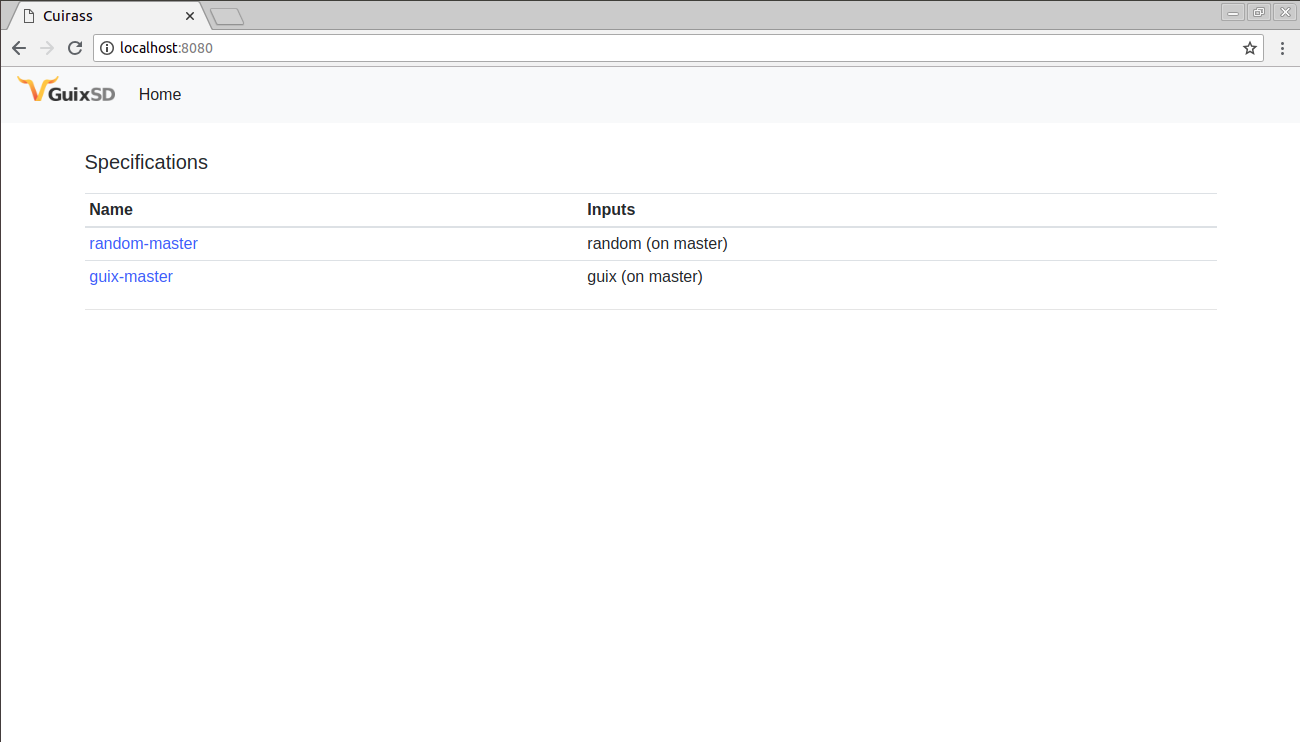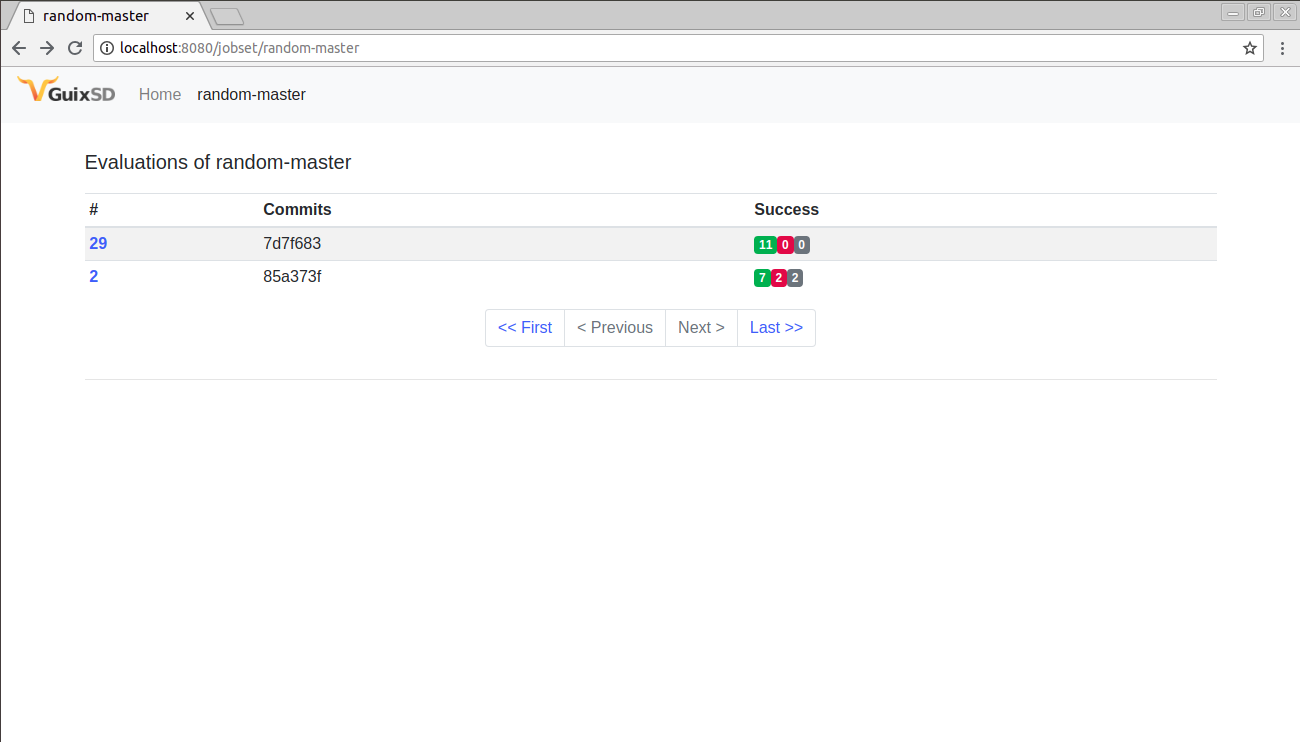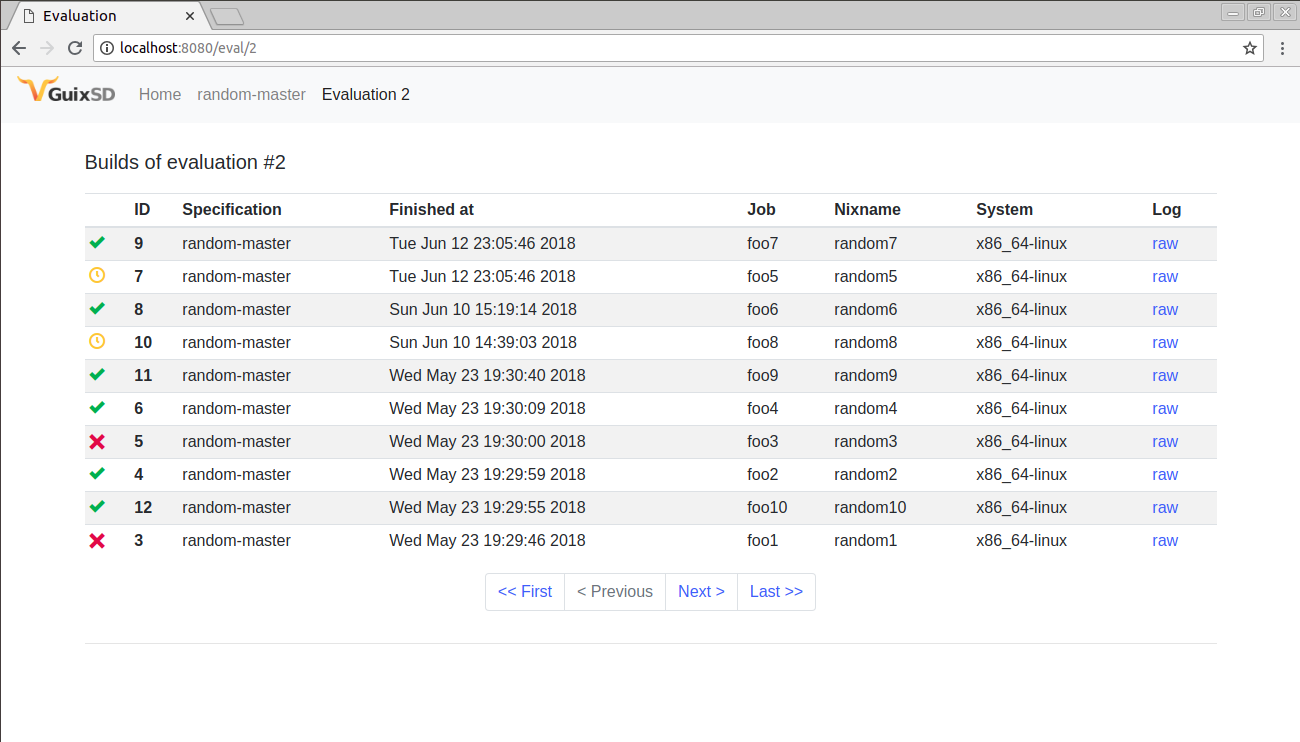GSoC 2018 report: Cuirass Web interface
For the last three months I have been working with the Guix team as a Google Summer of Code intern. The title of my project is "GNU Guix (Cuirass): Adding a web interface similar to the Hydra web interface".
Cuirass is a continuous integration system which monitors the Guix git repository, schedules builds of Guix packages, and presents the build status of all Guix packages. Before my project, Cuirass did not have a web interface. The goal of the project was to implement an interface for Cuirass which would allow a user to view the overall build progress, details about evaluations, build failures, etc. The web interface of Hydra is a good example of such a tool.
In this post, I present a final report on the project. The Cuirass repository with the changes made during the project is located at http://git.savannah.gnu.org/cgit/guix/guix-cuirass.git. A working instance of the implemented interface is available at https://berlin.guixsd.org/. You can find more examples and demonstrations of the achieved results below.
About Cuirass
Cuirass is designed to monitor a git repository containing Guix package definitions and build binaries from these package definitions. The state of planned builds is stored in a SQLite database. The key concepts of the Cuirass internal state are:
Job specification. Specifications state what has actually to be done by Cuirass. A specification is defined by a Scheme data structure (an association list) which includes a job name, repository URL, as well as the branch and a procedure
procthat specifies how this is to be built.Evaluation. An evaluation is a high-level build action related to a certain revision of a repository of a given specification. For each specification, Cuirass continuously produces new evaluations which build different versions of the project represented by revisions of the corresponding repository. Derivations and builds (see below) each belong to a specific evaluation.
Derivation. Derivations represent low-level build actions. They store such information as name of a build script and its arguments, input and output of a build action, target system type, and necessary environment variables.
Build. A build is a result of build actions that are prescribed by a derivation. This could be a failed build or a directory containing the files that were generated by compiling a package.
Besides the core which executes build actions and records their results in the database, Cuirass includes a web server which previously only responded to a handful of API requests with JSON containing information about the current status of builds.
Web interface
The Cuirass web interface implemented during the project is served by the Cuirass web server whose functionality has been extended to generating HTML responses and serving static files. General features of the interface are listed below.
The backend is written in Guile and implements request processing procedures which parse request parameters and extract specific data to be displayed from the database.
The frontend consists of HTML templates represented with Guile SXML and the Bootstrap 4 CSS library.
The appearance is minimalistic. Every page includes only specific content information and basic navigation tools.
The interface is lightweight and widely accessible. It does not use JavaScript which makes it available to users who do not want to have JavaScript running in the browser.
Structure
Let's review the structure of the interface and take a look at the information you can find in it. Note that the web-interface screenshots presented below were obtained with synthetic data loaded into Cuirass database.
Main page
The main page is accessible on the root request endpoint (/). The
main page displays a list of all the specifications stored in the
Cuirass database. Each entry of the list is a clickable link which
leads to a page about the evaluations of the corresponding
specification (see below).
Here is an example view of the main page.

Evaluations list
The evaluations list of a given specification with name <name> is
located at /jobset/<name>/. On this page, you can see a list of
evaluations of the given project starting from the most recent ones.
You can navigate to older evaluations using the pagination buttons at
the bottom of the page. In the table, you can find the following
information:
The ID of the evaluation which is clickable and leads to a page with information about all builds of the evaluation (see below).
List of commits corresponding to the evaluation.
Build summary of the evaluation: number of succeeded (green), failed (red), and scheduled (grey) builds of this evaluation. You can open the list of builds with a certain status by clicking on one of these three links.
Here is a possible view of the evaluations list page:

Builds list
The builds list of a evaluation with ID <id> is located at
/eval/<id>/. On this page, you can see a list of builds of the
given evaluation ordered by their stop time starting from the most
recent one. Similarly to the evaluation list, there are pagination
buttons located at the bottom of the page. For each build in the
list, there is information about the build status (succeeded, failed,
or scheduled), stop time, nixname (name of the derivation), system, and
also a link to the corresponding build log. As said above, it is
possible to filter builds with a certain status by clicking on the
status link in the evaluations list.

Summary
Cuirass now has the web interface which makes it possible for users to get an overview on the status of Guix package builds in a user-friendly way. As the result of my GSoC internship, the core of the web interface was developed. Now there are several possibilities for future improvements and I would like to welcome everyone to contribute.
It was a pleasure for me to work with the Guix team. I would like to thank you all for this great experience! Special thanks to my GSoC mentors: Ricardo Wurmus, Ludovic Courtès, and Gábor Boskovits, and also to Clément Lassieur and Danny Milosavljevic for their guidance and help throughout the project.
Unless otherwise stated, blog posts on this site are copyrighted by their respective authors and published under the terms of the CC-BY-SA 4.0 license and those of the GNU Free Documentation License (version 1.3 or later, with no Invariant Sections, no Front-Cover Texts, and no Back-Cover Texts).